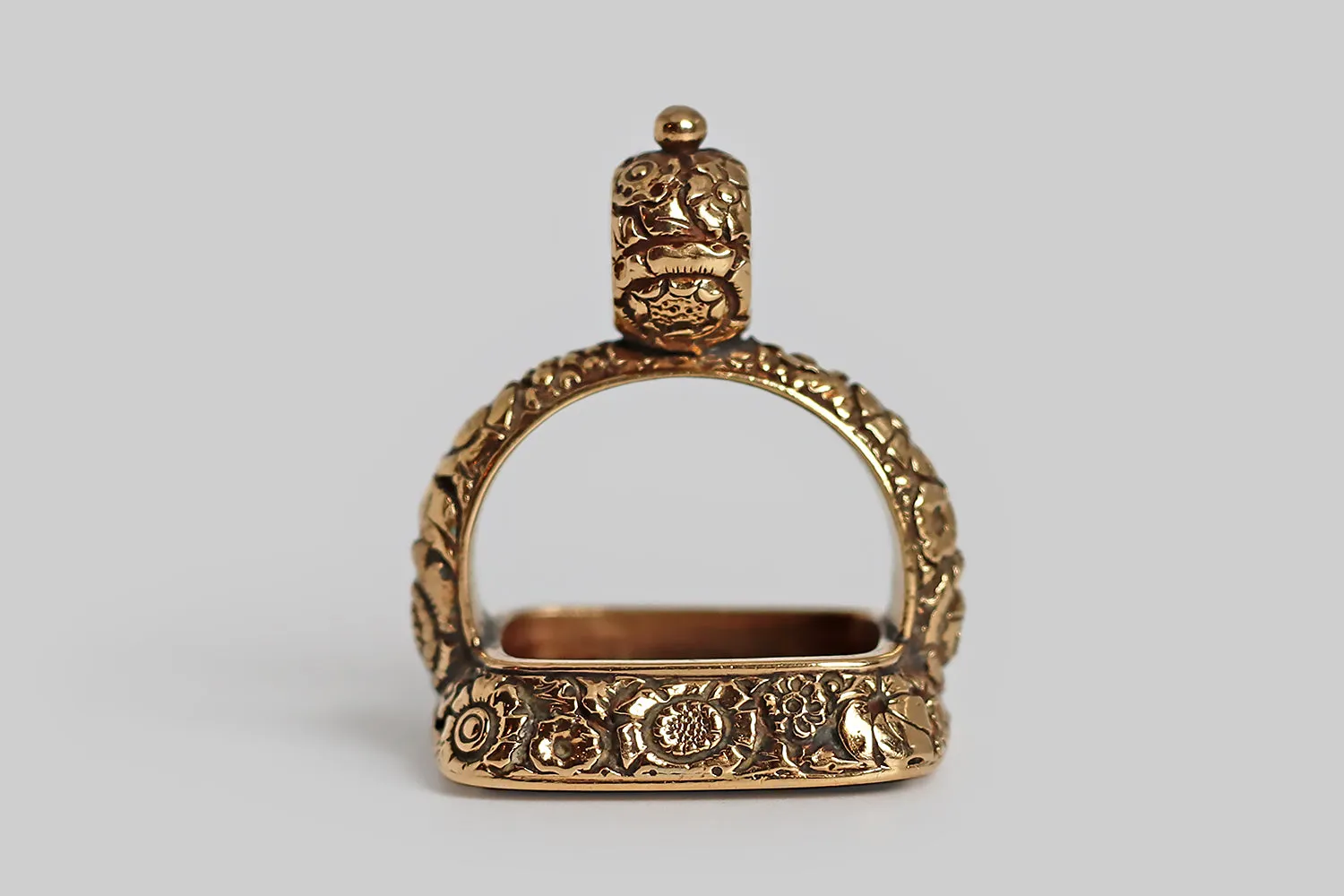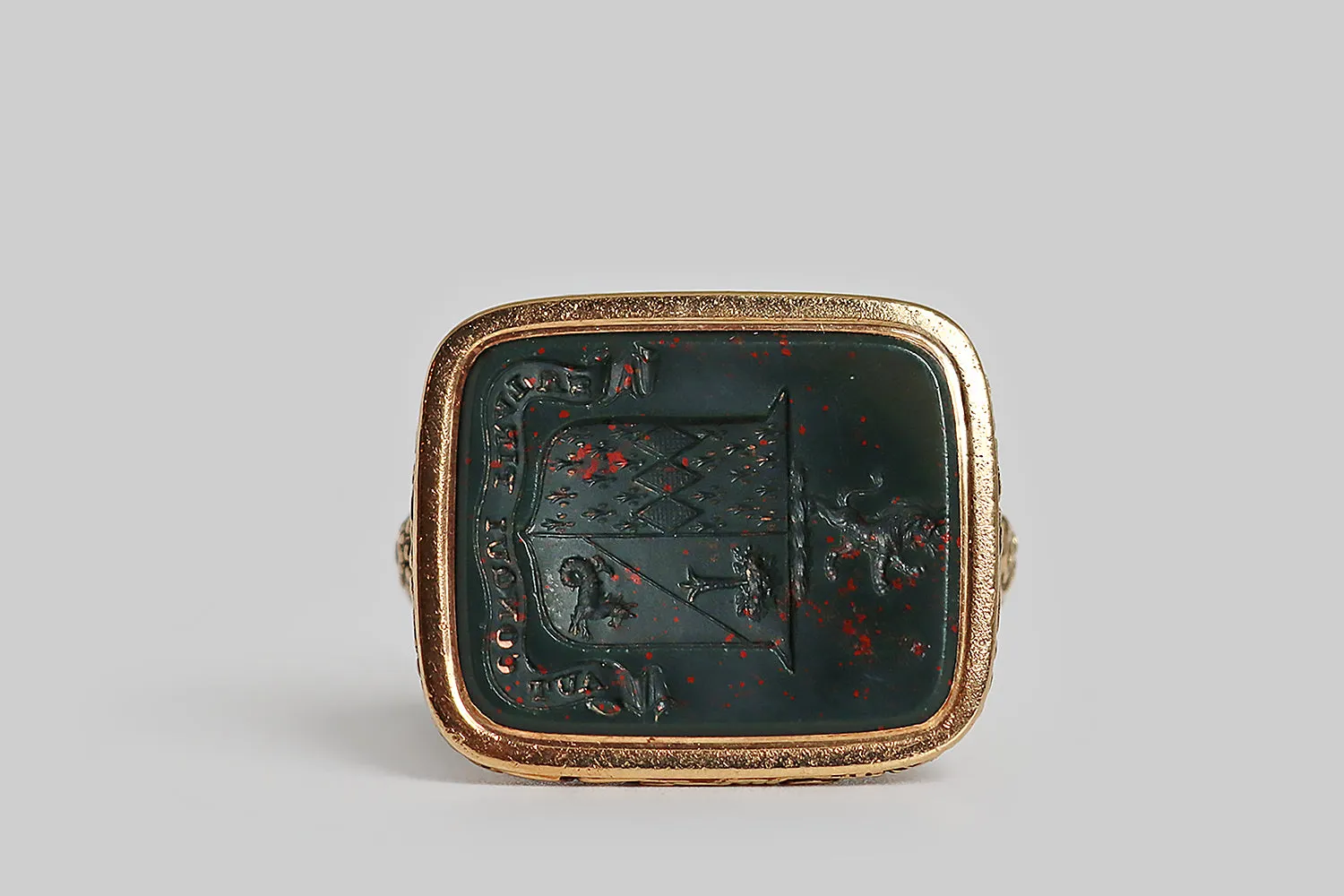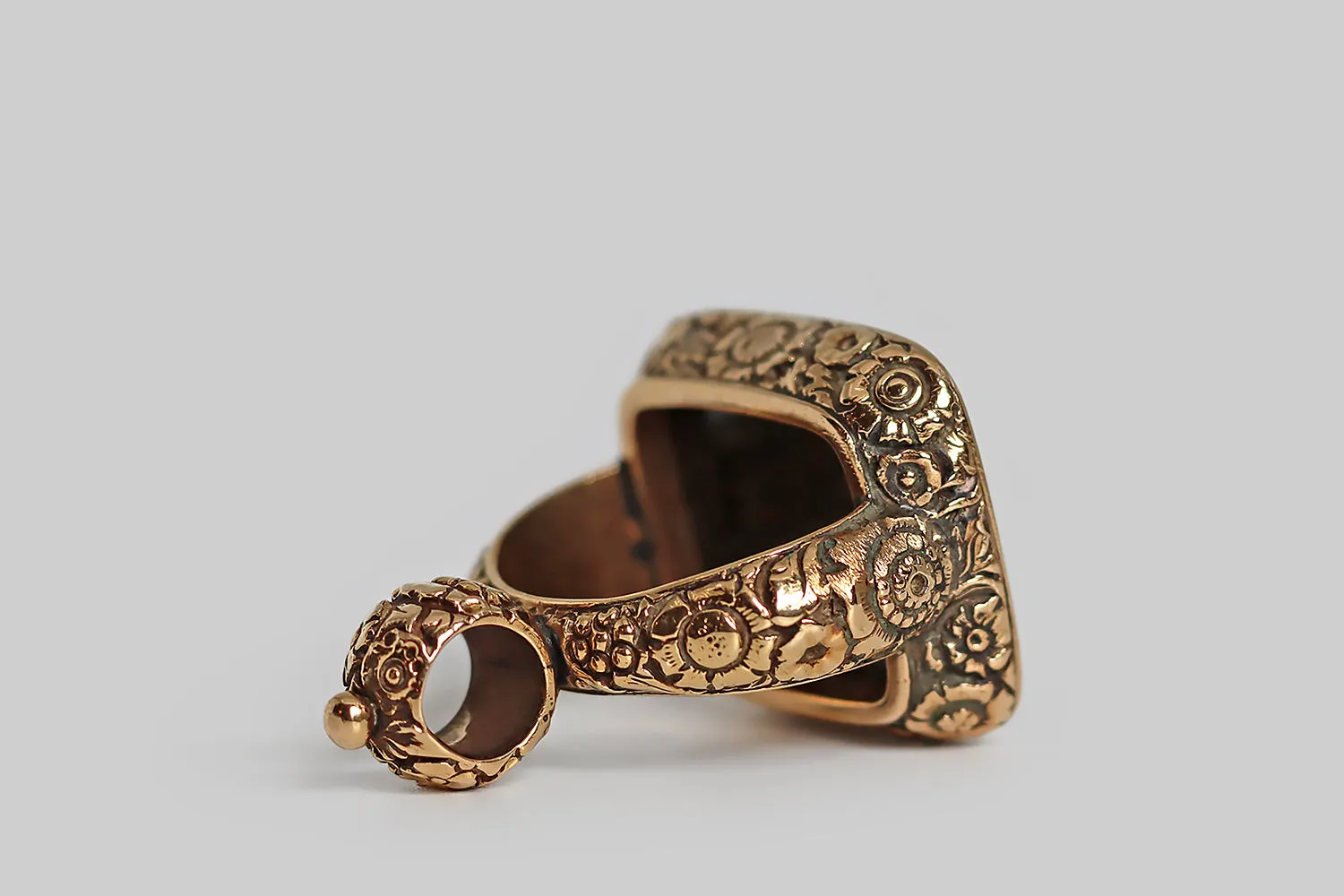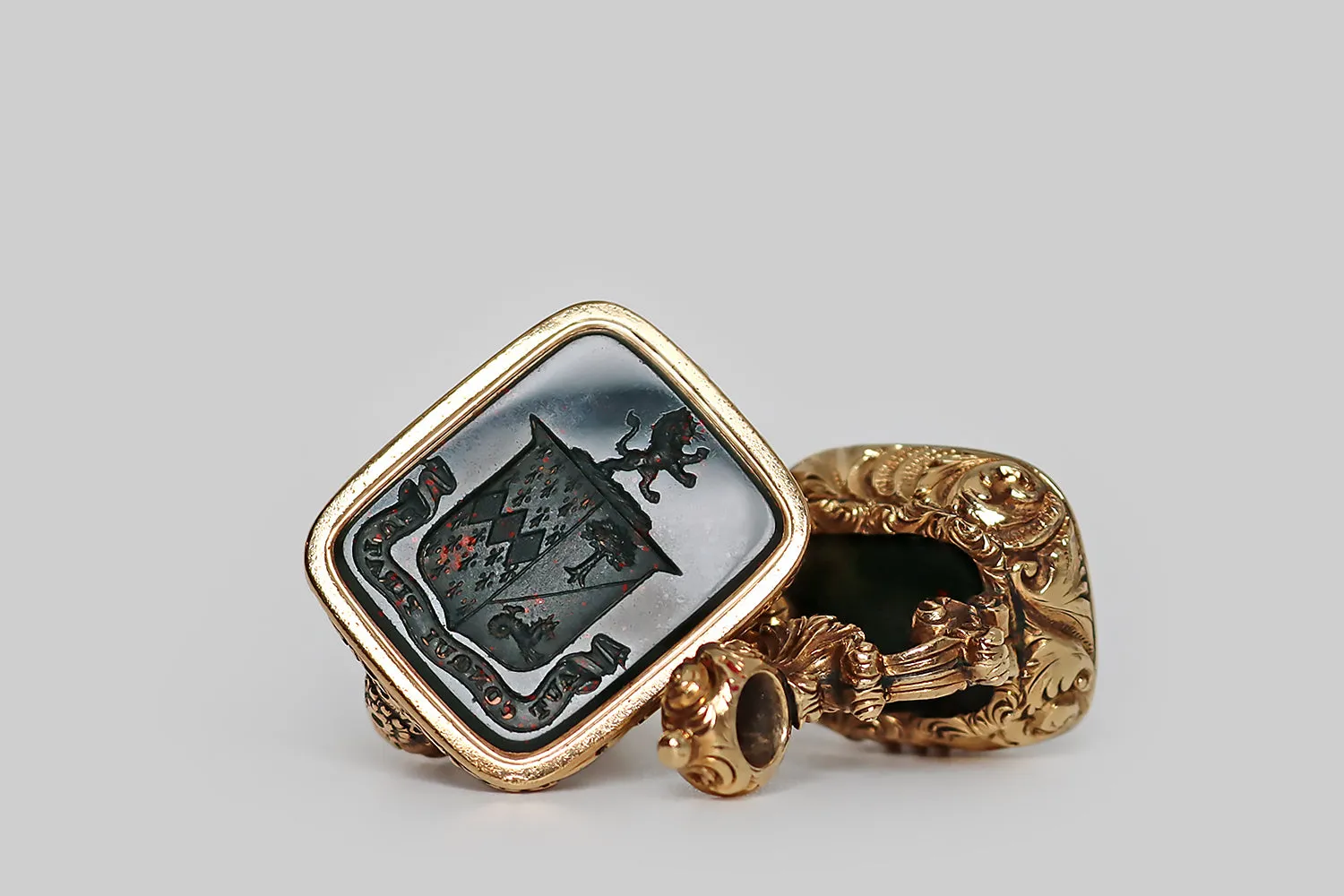









A striking, extra-large, Georgian era fob, modeled in 14k yellow gold and set with a rectangular, intaglio-carved, bloodstone gem. This finely-carved wax seal features a coat of arms,atop whichstands a rampant lion. This coat of arms is "impaled" to indicate a marriage. The sinisterfield is divided, diagonally, "party per bend—"the charge depicted in the top half of this field isaneradicated tree, the charge in the bottom half is ahippocampus (or sea-horse). The dexter field is engraved with 22 ermine pelts, and three lozenges. The motto aut conqui piratus "to conquer pirates" or "to hunt pirates" is emblazoned beneath the shield, on a curling banner. The fob'sheavy, stirrup-formframe is decorated all-over with plump blossoms. This golden garden is varied, asymmetrical, beautifully and deeply carved!This fob wearsbeautifully as a large pendant, on a long chain, alone or layered with other meaningful pieces. We love the wonderful sea-horse, and any historical mention of pirates!
The motto and thehippocampus suggest this fob's original owner might have been a bold, sea-faring merchant, or someone responsible fordefending islands from pirates.There is a long and fascinating history of piracy in the Bahamas, for example, andthey call the period between 1690 and the 1720s "the golden age of piracy." On September 5, 1717, King George I issued the Proclamation for Suppressing of Pirates, which reintegrated boatloads of scoundrels into "society." We have not yet unraveled the secrets of this coat of arms, but with some further research it might give up an interesting story!
14k gold
Bloodstone
1780 - 1800
Base measures approx 25.5 mm x 21.1 mm; total height is approx 32.8 mm (about 1.3").
